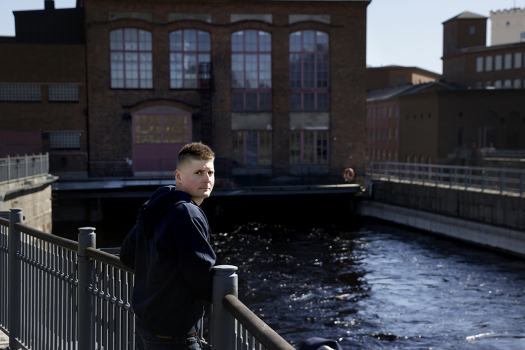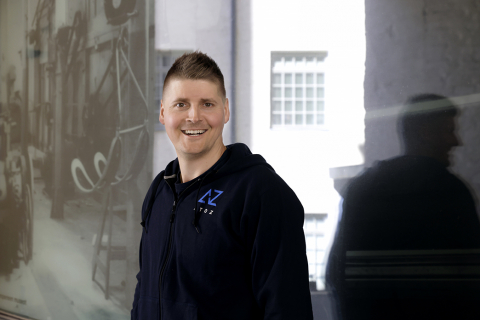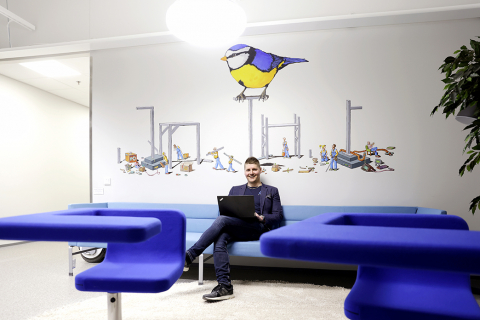
Finnish software development house AtoZ wants to see a more energy-efficient Finnish ICT sector – “Finland has a chance to lead the way”
When a resource-consuming product or production process is digitised, the savings achieved include both raw materials and energy. The software itself, however, may consume much more energy than needed,” explains CEO Mikko Leinonen from software development house AtoZ.
At the moment AtoZ is running a project to develop methods for auditing software energy-efficiency.
“It will bring a very new kind of business to our company. In the future, we will be auditing customer companies’ own systems, which means in practice that we take apart the system and software development process itself and go through all the areas where energy efficiency can be assessed,” Leinonen says.
The final report will then show how much energy can be saved using which measures.
Depending on the size of the software, optimisation can cost anywhere between tens and hundreds of thousands of euros, but the savings achieved can be a matter of hundreds of thousands or even millions.
BUYERS INTERESTED IN THE GREEN BUSINESS MODEL
AtoZ’s new green business model will also change the way buyers approach software development. In the future, software development will be a topic not only for the product development team, but also for financial management personnel looking for savings and social relations managers and marketing teams looking to strengthen green thinking.
“No-one else has done this kind of project. It is in itself a whole new concept, because digitalisation has long been thought of as green by default,” Leinonen points out.
Potential customers for AtoZ’s energy-efficient software development can be found in data-intensive industries and in the finance and gaming industries. Indeed, the company’s current customers already include the likes of Sandvik, Epec, Novatron and Heeros.
“For quality assurance of mobile machinery and devices, we are Finland's number one. For example, mining equipment runs autonomously and collects a huge amount of data about its environment. These machines run on electricity and use a lot of energy.”
“BITCOIN IS A COLOSSAL MISTAKE FOR HUMANKIND”
Leinonen is concerned that a huge amount of the world’s energy is being wasted on different digital solutions.
He is critical of cryptocurrency mining, for example.
“This is my personal opinion, not that of the company. I think that Bitcoin is a truly colossal mistake for humankind. An amount of electricity equal to the total electricity consumption of Brazil is spent making computers and graphics cards grind out numbers that produce nothing more than further encrypted numbers. That is how the currency is kept alive. It simply doesn’t fit into my green way of thinking.”
Coding is not enough. “If you want to join AtoZ, it’s not enough to simply be interested in coding. With us, you need to also have some level of interest in company matters and company development,” Mikko Leinonen makes clear.
As there is only a limited amount of energy in the world, the same energy that is now being used to grind out bitcoins could, in Leinonen’s opinion, be used for something “that really makes sense and brings tangible benefits”.
Leinonen adds that such wasteful use of energy is essentially in contradiction with all sustainable development thinking.
At the moment, the ICT sector consumes around 5–9% of all the world’s energy, but this is growing by 6–9% per year. This means that global energy consumption in the ICT sector is around 4,000 terawatt hours (TWh), and by 2030 it will have increased to around 8,000 TWh.
By way of comparison, Finland's total energy consumption last year came to 355 TWh.
“Different estimates put the potential energy savings from green software at 30–90% compared to traditional software implementations. We could therefore be saving at least 1,200 terawatt hours simply by doing the same things better,” Leinonen concludes.
THERE ARE PLENTY OF WAYS TO SAVE ENERGY!
Leinonen sees countless areas of software operations where energy efficiency can be improved.
“Many people have asked me whether a device runs slower if it is made more energy-efficient. In fact, an energy-efficient device can run faster. The most important thing is that it is set up to fit its purpose,” he says.
Improvements can be made right from the software architecture stage. For example, one can investigate how well micro-services work together, what programming language they were made with, and how often the server is checked. Should it be every millisecond? Or would every ten milliseconds, every second, or every five minutes be enough? Or simply only when needed?
“At the moment, an outrageous amount of energy is burned up simply in order to maintain server capacity.”
Think about the options. As their server usage increase, Mikko Leinonen encourages companies to consider different options than just increasing server capacity.
Leinonen is critical of the common approach that simply uses extra capacity to deal with server or performance issues as server use increases. This solution simply increases energy consumption – and consumes money as well.
“The same money could be used to think through how a different solution could be implemented.”
He sees huge opportunities for savings in the ICT sector.
“It's rare to find some software where there wouldn’t be some opportunities to make savings once we got down to thinking through more energy-efficient solutions. But at some point someone has to work out if it makes sense to put tens of thousands of euros into such redesign work. That money would need to be recovered through savings in the following years.”
TRAINING FOR GREEN SOFTWARE DEVELOPMENT
Part of AtoZ’s long-term vision is to create a kind of software certification, verified by AtoZ, for the software that the company produces.
“After all, home appliances already have energy efficiency ratings, so why can’t software have them too?” Leinonen points out.
In the future, the company may also start providing training; as well as producing energy-efficient software, AtoZ could start training its customers on the principles of green software development.
“At the moment, no-one is doing this. Not one single university. You won’t find any green software development courses. This is all so new,” Leinonen says.
Although the EU has its own green transition objectives and has identified best practices for green coding, Leinonen considers that training on green software development is still in short supply.
Leinonen is keen to dispel illusions of digital greenness. We’re still a long way from our green goals if the energy for servers is coming from fossil fuels. He also prefers to talk about energy efficiency rather than carbon footprints.
Another area which Leinonen sees as important is information security and ethical software development, meaning where and how the code is produced. Software development is expensive, so for many it is an attractive option to produce cheap code in cheap countries in order to save money.
Leinonen recognises that there are good training organisations in cheap countries, but they have probably paid even less attention there to software energy efficiency than companies in richer countries.
“In Finland, we have a chance to be global pioneers in this area. Green software development is not a big trend worldwide. Instead, savings have been sought through other means, such as exporting software development to India. There is plenty we can be doing, however, to make the ICT sector greener.”
Text: Marjo Vuorinen
Photos: Liisa Takala





